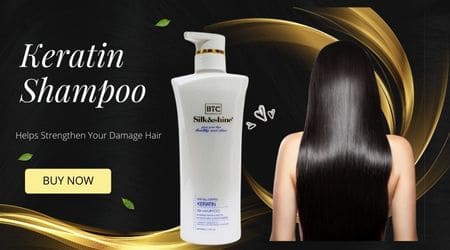Hair Conditioner and Hair Spa are both hair care products or treatments, but they serve different purposes in promoting hair health. Here’s a breakdown of the differences between them:
Difference between Hair Conditioner and Hair Spa? Explained in Detail
| Difference | Hair Conditioner | Hair Spa |
| Purpose | Hair conditioners are designed to moisturize and detangle the hair. | Hair spa is a more comprehensive treatment that aims to rejuvenate and revitalize the hair and scalp. |
| Application | Typically used after shampooing, hair conditioners are applied to the hair and left on for a short period before rinsing. | Hair spa treatments involve multiple steps, including massage, application of hair mask, and sometimes steam therapy. It is often done in salons. |
| Benefits | Conditioners help in smoothening the hair cuticle, reducing frizz, and making the hair more manageable. | Hair spa treatments are designed to address specific hair issues such as damage, dryness, or dandruff. They provide deep conditioning, nourishment, and relaxation for the scalp. |
| Ingredients | They often contain moisturizing agents, such as oils, silicones, and proteins, to nourish the hair. | Hair Spa products may contain a blend of essential oils, vitamins, and other intensive conditioning agents |
In summary, while hair conditioners focus on daily moisturizing and detangling, hair spa treatments offer a more intensive, holistic approach to nourishing and rejuvenating the hair and scalp. Optimizing your content with relevant keywords will help users find the information they are looking for in the vast online space.
Here are some key advantages of opting for a professional hair spa:
- Deep Conditioning: Professional hair spa treatments often include deep conditioning masks or creams with highly nourishing ingredients. This helps to replenish moisture, repair damage, and improve the overall texture of the hair.
- Scalp Rejuvenation: A crucial aspect of a hair spa is the massage and attention given to the scalp. This stimulates blood circulation, promoting a healthier scalp environment, reducing dryness, and potentially alleviating issues like dandruff.
- Repair and Strengthening: Many hair spa products contain proteins and vitamins that aid in repairing damaged hair shafts and strengthening the hair structure. This can be especially beneficial for individuals with chemically treated or over-processed hair.
- Improved Hair Texture: Regular professional hair spa treatments can lead to softer, smoother, and more manageable hair. The deep conditioning and nourishing ingredients contribute to a healthier cuticle, reducing frizz and enhancing shine.
- Relaxation and Stress Reduction: Beyond the physical benefits, the massage and relaxation associated with a professional hair spa can contribute to stress reduction. This holistic approach addresses both the mental and physical aspects of well-being.
- Customized Treatments: Professional hair spa treatments can be tailored to address specific hair concerns. Whether it’s hydration, damage repair, or color protection, salon experts can recommend and apply treatments that cater to your unique needs.
- Enhanced Product Penetration: Professional hair spa treatments often involve the use of steam or heat, which helps open up the hair cuticle, allowing the treatment products to penetrate more deeply. This ensures that the nourishing ingredients reach the inner layers of the hair for maximum effectiveness.
- Long-Term Hair Health: Regular sessions of professional hair spa can contribute to the long-term health of your hair. Consistent care and attention can prevent and mitigate damage, leading to stronger, more resilient strands.
Do It Yourself at Home Hair Spa
Indulging in a DIY hair spa at home is a convenient and cost-effective way to pamper your hair and promote overall hair health. Here’s a step-by-step guide to creating your own relaxing hair spa experience:
1. Gather Your Supplies:
- Mild sulfate-free shampoo
- Deep conditioning hair mask or homemade hair mask ingredients
- Towels
- Wide-tooth comb
- Shower cap
- Essential oils (optional for aromatherapy)
2. Prepare Your Space:
- Find a comfortable and quiet space where you won’t be disturbed.
- Set up a cozy chair or sit comfortably on the floor.
3. Pre-Shampoo Treatment:
- Gently detangle your hair using a wide-tooth comb.
- Apply a pre-shampoo treatment if available, or use a small amount of coconut or olive oil to the lengths of your hair for added nourishment.
4. Shampoo:
- Wash your hair with a sulfate-free shampoo to cleanse and prepare your hair for the spa treatment.
- Rinse thoroughly with lukewarm water.
5. DIY Hair Mask:
- Use a store-bought deep conditioning mask or create a DIY mask with ingredients like mashed avocado, yogurt, honey, or aloe vera gel.
- Apply the mask evenly from roots to tips, focusing on the ends and damaged areas.
- Put on a shower cap to trap heat and enhance the conditioning effect.
6. Steam Treatment (Optional):
- If you have a steamer, sit under it for 10-15 minutes to allow the mask to penetrate deeply.
- Alternatively, wrap a warm, damp towel around your head to create a makeshift steam effect.
7. Relax and Enjoy:
- Take this time to relax, read a book, listen to music, or practice mindfulness.
- The heat will help open the hair cuticles, allowing the mask to work its magic.
8. Rinse and Condition:
- Rinse the hair mask with cool or lukewarm water.
- Use a mild conditioner to seal the cuticles and add extra softness.
9. Final Rinse:
- Finish with a cool water rinse to close the hair cuticles and add shine.
10. Towel Dry:
- Gently blot excess water from your hair with a soft towel. Avoid rubbing vigorously to prevent damage.
11. Optional: Aromatherapy:
- Add a few drops of your favorite essential oil to your conditioner for a spa-like aroma.
12. Style as Desired:
- Allow your hair to air dry or style as usual. You’ll likely notice improved texture, softness, and shine.

